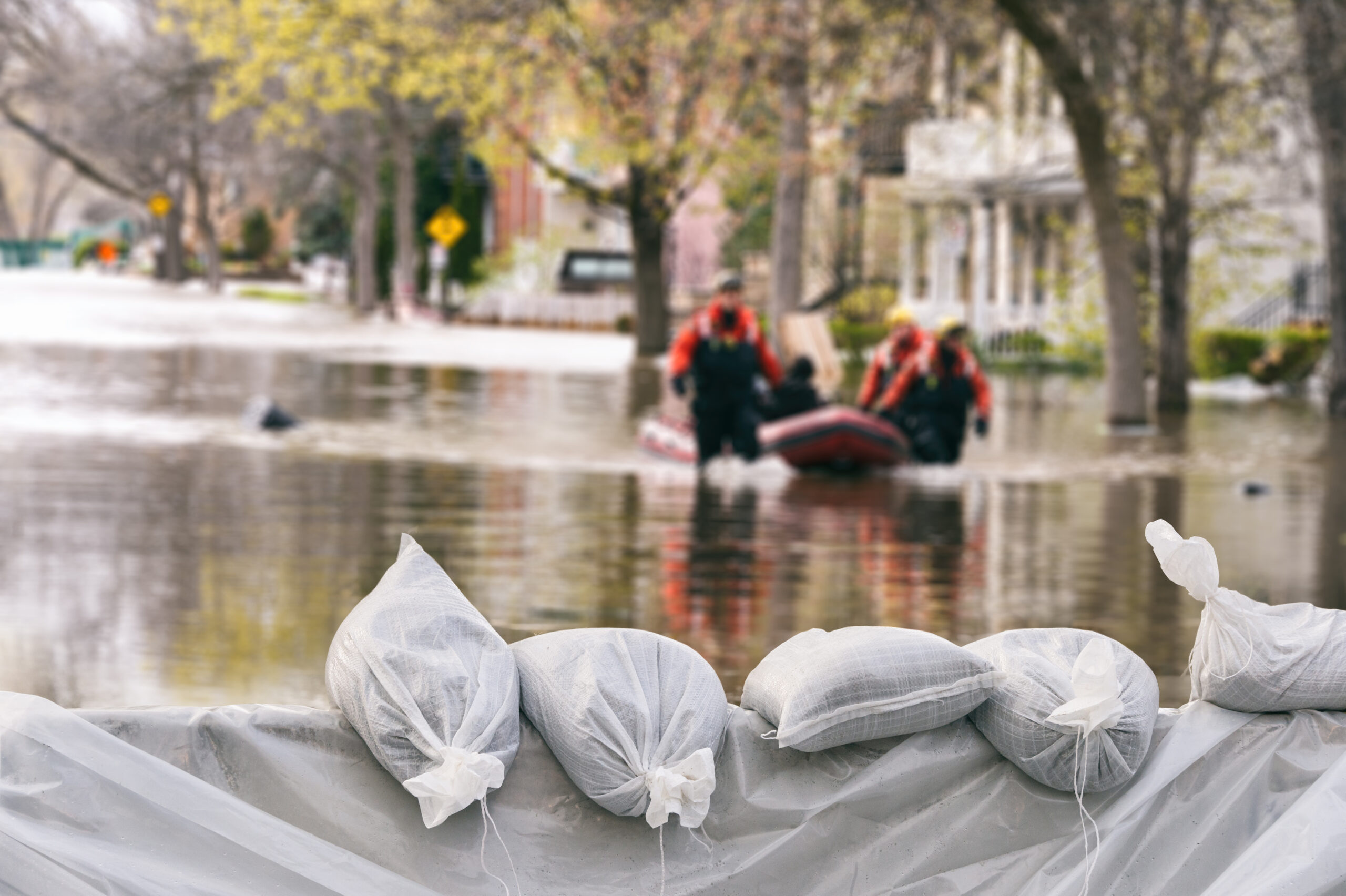Preparing for a flood can seem daunting, especially if you believe your business does not require flood insurance. The array of coverage options available can be overwhelming and requires careful evaluation of whether your business needs such protection. Even if your business is not in a flood plain, securing adequate coverage for flood damage can protect your business from costly claims.
A common definition for “flood” in commercial insurance policies is a general and temporary condition of partial or complete inundation of land areas from:
a. The overflow or expansion beyond normal boundaries of inland or tidal waters, including natural or man-made lakes, reservoirs, ponds, brooks, rivers, streams, harbors, oceans, or any other body of water or watercourse;
b. Waves or tides, including tsunami; or their spray, whether driven by wind or not.
Flooding is one of the most, if not the costliest threats to commercial properties. According to FEMA’s National Flood Insurance Program, just one inch of water can cost $25,000 damage to a structure. In 2022, structural damages from flooding were estimated to be $13.5 billion by First Street Foundation, a nonprofit group, and global commercial engineering firm Arup.
Given the high costs associated with flood damage, appropriate policies need to be implemented both before and after an event occurs.
The right flood insurance policies
Flood insurance policies can differ in many ways. A key distinction lies in whether coverage is purchased through a commercial property policy, a specific flood policy or the National Flood Insurance Program (NFIP).
The following are key points to consider when buying or evaluating your flood insurance policies. It’s crucial to review these annually, given the constant changes in climate conditions:
Know your deductible: Flood deductibles are typically different than other hazard deductibles. Understanding the difference can positively impact your restoration and reconstruction planning.
Valuation provision: Your flood policy will specify how losses are adjusted and settled by the insurance carrier. Two primary valuation methods are:
- Replacement Cost Value (RCV): the cost to replace the damaged property with materials of like kind and quality.
- Actual Cash Value (ACV): the cost to replace the damaged property with materials of like kind and quality, less depreciation. Depreciation is based on the age and condition of the property just prior to the loss that caused the damage.
Increased cost of construction: Sometimes referred to as code upgrade coverage. It is typically an additional coverage that will reimburse the cost of bringing specific building construction up to the current building code requirements.
Be prepared post-flood
Understanding your flood insurance policy is the first step toward reducing the financial impact on your business post-flood. However, knowledge of policies alone isn’t enough. Preparing for the aftermath of a flood requires both a proactive and reactive approach.
To quickly minimize losses and speed up recovery after a flood, it’s crucial to have a response plan in place. Hiring the right restoration contractor, setting up a financial plan and informing employees about what to expect during a business interruption allows you to proactively combat flood damage.
A reactive approach is also viable. Once the floodwater recedes and your business is operational again your team can review what worked and what didn’t for future circumstances.
Restoration contractor
As statistics show, water damage from a flood is costly. Having a trusted and vetted restoration contractor already in place will make the clean-up process move swiftly. The choice of a contractor for restoration and reconstruction is up to you as the insured.
With a contractor quickly on-site post-flood, water can be removed from the property sooner to allow the damage to dry out and be removed without further effects. A concern with delayed dry-out is the high probability of mold. Some policies have limited mold coverage. Delayed dry-out could cause issues with triggering that coverage. The contractor will also help remedy other safety concerns flood leave in the wake, including exposed wires, weakened buildings and water contaminated by unknown substances.
While you may be able to get recommendations from your insurance company after a flood event, the likelihood of the best contractors being available in a catastrophic event is extremely low. Having a trusted contractor already in place who understands these hazards and how to deal with them will take some burden off your business.
Minimize financial impact
An often overlooked aspect is the cost of preparing for a flooding event. Some policies will reimburse you for pre-loss mitigation or ’loss avoidance measures’ such as sandbags. Keep in mind that this coverage, if available, only applies if damage to an insured property by or from a flood is imminent and there is a threat of flood damage.
Other measures that can be taken to protect your building from flood damage is dry floodproofing or sealing a structure to prevent water from entering. To stay proactive, elevate building equipment and utility systems where possible or protect them in their current location through floodproofing.
While these types of preventions are not covered by insurance, business owners are encouraged to consult with an insurance expert to determine if they could potentially reduce their flood policy premiums.
Business Interruption
Physical damage is typically top of mind for business owners; however, another exposure that is just as great of a concern is business interruption. The importance of having robust flood coverage is not only for the potential physical damage that the water can cause but also for the financial exposures that are created when an insured premises cannot be accessed or is shut down due to flooding.
In their report, the First Street Foundation estimated that flood damage to commercial buildings resulted in 3.1 million days of lost business operations in 2022 alone. They predict that this number will grow to 4 million days by 2051—almost a 30 percent increase.
A business interruption loss can occur due to flooding, even without physical damage to the insured premises. Certain policies include two additional coverages that apply in these situations: Civil Authority and Ingress/Egress. Both coverages expand the insured area to a one-mile radius (in some cases five miles, depending on underwriting) surrounding the insured premises. They are triggered by physical damage created by a “covered cause of loss”, or flood for the purposes of this discussion.
Civil Authority protects against business interruptions when a governmental entity prohibits access to an area following a disaster. Similarly, the Ingress/Egress coverage involves a “covered cause of loss” prohibiting access to the insured premises by suppliers, customers or employees. Without listing flood as a covered risk in your policy, these additional coverages won’t be triggered to provide compensation for business interruption.
Navigating the complex terrain of flood insurance policies and the steps it takes to mitigate flood damage requires thorough preparation and an understanding of your current policies. Proactive prep work coupled with strategic planning for post-flood recovery can significantly reduce the impact of flooding on your business operations, financial stability and future disasters.
For more information on flood policies and preventative actions, contact a trusted advisor.
*This blog is not intended to serve as legal advice for individual fact-specific legal cases or as a legal basis for your business practices.

